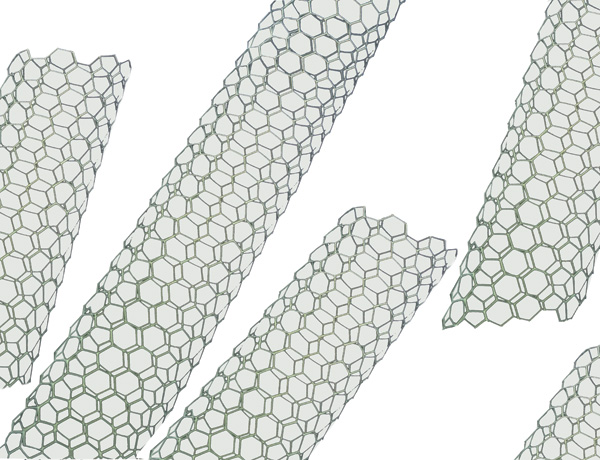Informed Decisions
By Felice Frankel
Thinking about how to visually represent an idea for the purpose of explaining it
Thinking about how to visually represent an idea for the purpose of explaining it

DOI: 10.1511/2008.70.154
In this 30th Sightings, I have decided to discuss one of my own images, as I did in the very first column. Not that I think this particular image is earth-shattering; in fact, many images in this issue of American Scientist might be considered more worthy. But I thought Sightings readers would be interested in an example of what has become for me an obvious, but too-often ignored, transformative exercise: clarifying and learning science by thinking about how to visually represent an idea, a process or a structure in science, for the purpose of explaining it.

Felice Frankel
My Harvard colleague and coauthor George Whitesides, with whom I am working on the book No Small Matter, forthcoming in 2009 from Harvard University Press, asked that I make an interesting representation of nanotubes. I am a science photographer, not an illustrator, so my first course of action is usually to think photographically. The obvious, making a scanning electron micrograph of a nanotube, was not an option. Others have done that, probably much better than I would have. I decided to photographically simulate a nanotube structure.

Felice Frankel
Here's what I did. First I printed a black hexagonal pattern, representing a standard carbon lattice, on an 8x10 piece of transparent acetate (a). I then began to roll the acetate to make a tube. Immediately, something wonderful happened: I couldn't make a decision about how to longitudinally connect the edges of the paper. I was faced with a few choices. The literature informed me that there were indeed various possible configurations for carbon nanotubes, and that the ultimate configuration was significant in determining the electrical properties of the nanotube.
For this image, I decided (for no particular reason other than aesthetic) to adopt what's called the "zigzag" configuration and not to attempt to show the endcaps that tie up the dangling carbon bonds in a nanotube. I secured the edges of the acetate with a couple of pieces of tape and placed the tube on my flatbed scanner. [Below left] is the image I came up with (b). Nothing terribly compelling. I then "inverted" the nanotube in Adobe Photoshop and combined a few "layers" of the same image to make multiple layers with varying degrees of transparency, resulting in (c). For the final composite image at left, I went a little further in nudging the image using various filters and additional inversions.
Whether the reader believes the final image was worth all that manipulation is another discussion. The point here is that making this representation taught me something about nanotubes. The act of creating it allowed me to comprehend the key bit of nanotube science that Boris Yakobson and the late Richard Smalley described in a word-picture in these pages in July-August 1997:
. . . a nanoscopic tailor might start with a nice big piece of a one-atom-thick sheet of graphite, cut a long strip out of it and roll it up into a cylinder with no stitches left. The tailor has a decision to make, though: whether to choose the strip width parallel to the dense zigzag row of bonds, perpendicular to it, or at . . . an angle somewhere between the angles of the zigzag (0 degrees) and the armchair (30 degrees).
We are privileged that the National Science Foundation sees the value to students in making representations in science through their support of our Picturing to Learn project (www.picturingtolearn.org), in which undergraduates show their grasp of an aspect of science by creating a representation intended to communicate the information to a high school student. Whoever you are—a photographer manipulating a scientific image in today's "virtual darkroom," a physicist sketching on a blackboard, a student reaching for a visual metaphor or graphing a function—understanding often comes through the act of representation. I would be delighted to hear from Sightings readers interested in hearing more about our project.
Click "American Scientist" to access home page
American Scientist Comments and Discussion
To discuss our articles or comment on them, please share them and tag American Scientist on social media platforms. Here are links to our profiles on Twitter, Facebook, and LinkedIn.
If we re-share your post, we will moderate comments/discussion following our comments policy.